Wooden boats come with their fair share of hand-sanding, whether it’s smoothing wood surfaces or between coats of varnish or paint, so it pays to extend the useful life of sandpaper. In my experience, it’s not the abrasive particles that wear out. I’ve looked at the grit of new and well-used sandpaper through a strong magnifying lens, and there’s not much difference: the grit outlasts the paper. Some of the newer, more expensive sandpapers have thicker backing materials, but they still can be torn. Once a small tear starts on the edge, it’s likely to continue across the sheet.
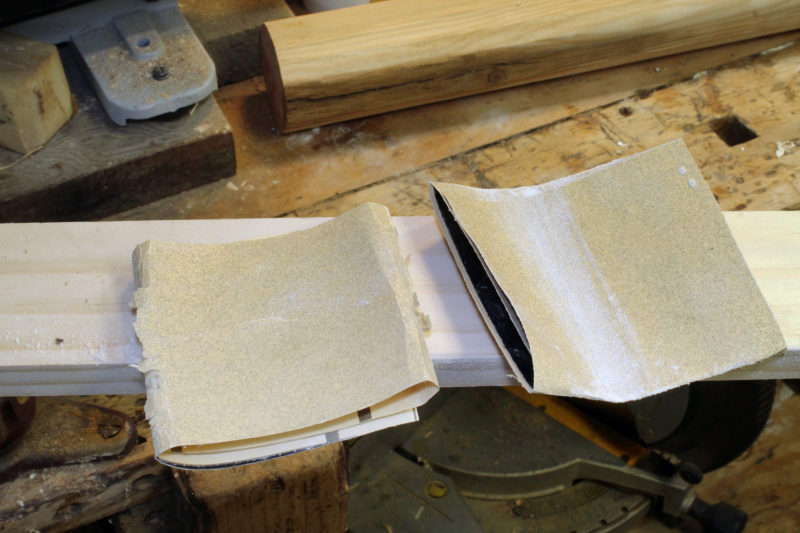 Photographs by the author
Photographs by the authorThe paper backing of a piece of 150-grit doesn’t hold folds well and can roll, damaging the abrasive coating. The same 150-grit sandpaper with duct-tape backing doesn’t roll and keeps its shape. The sharp, undamaged folds can more effectively work into corners.
Unlike sandpaper, duct tape is not easily torn, and when applied to the back of a sheet of sandpaper it adds its resistance to tearing. Sandpaper is wider than duct tape, so it takes several lengths of tape to cover an entire sheet. Overlapping the tape by 1⁄4″ or so will avoid creating weak spots at seams that are just butted together. A taped full sheet can be cut with a utility knife to whatever sizes are needed.
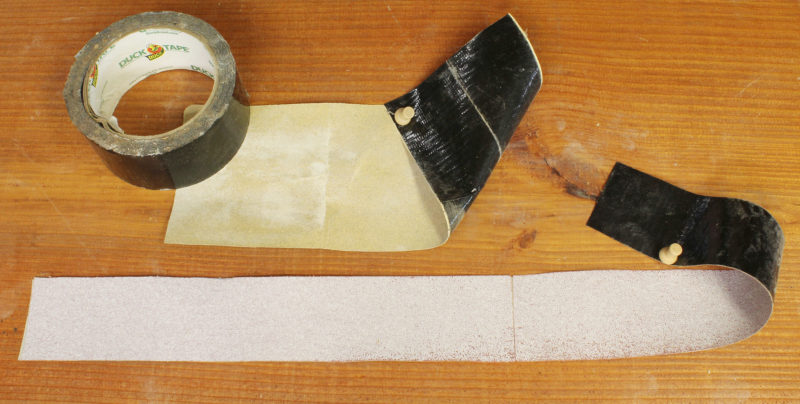
Duct tape can be applied in multiple strips to cover wide areas of the back side of sandpaper, and strips of sandpaper can be butted together on a single width of tape.
One of my favorite sizes for hand-sanding is a one-third sheet folded in thirds. With the duct-tape backing, the creases stay put; without the tape, the creases roll as the three layers of unreinforced paper slide over each other, leading to less effective sanding and delamination of the paper and the abrasive coating.
Although I retired my quarter-sheet Makita orbital sander years ago when I switched to random-orbit disc sanders, I remember well how it regularly tore the sandpaper loaded in it long before the grit gave out. Duct-tape reinforcement would prevent the untimely failures of sandpaper in fractional-sheet orbital sanders.
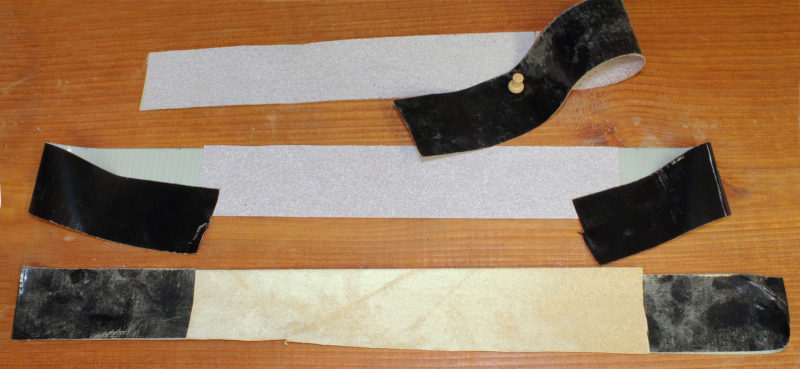
While two 11″ strips of sandpaper can be butted together on a length of duct tape (top) to make a long sanding strip, a single 11″ length can be backed with an extra-long piece of tape (middle) to create handholds and still have enough sandpaper to do the work.
Duct tape even makes sheet sandpaper work very well for a job that it couldn’t do without the reinforcement: sanding cylinders in shoeshine fashion. With a strip wrapped over the top of anything round from a bronze pintle to a spruce spar, the draped ends, pulled tight and alternating up and down, sand round and smooth; only cloth-backed sanding belts were strong enough to do that work. I had been using old 3″ x 21″ belts from my Makita and 6″ x 48″ belts from my stationary Grizzly. While the cloth backing was much stronger than the paper of sheet sandpaper, the grit was usually worn from long use and not as effective as it once was. New belts would have sharper grit, but I was reluctant to buy belts just to tear them up into strips for hand use. The fresh fabric-and-resin backing would be stiff, making the edges prone to dig in, and not as easy to handle as belts softened by use on the machines for which they were intended.
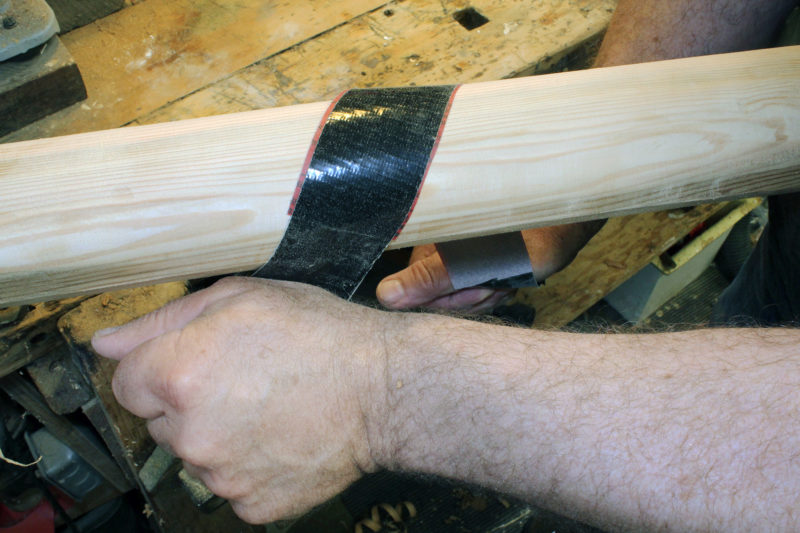
A tape-backed sandpaper strip can stand up to aggressive sanding that would quickly tear unreinforced sandpaper.
Sheets of sandpaper are 11″ long—not long enough to use with the shoeshine method on a mast 3″ in diameter. Two 11″ strips, butted end-to-end and backed with a 22″ length of tape, are more than long enough, but the sandpaper on the ends never gets used. A single 11″ strip of sandpaper provides enough abrasive to do the sanding, and a length of tape extending 1′ beyond each end of the sandpaper and folded back on itself will make 6″ handholds. The taped sandpaper strips work great for rounding and smoothing spars; I can pull as hard as I like to move wood quickly and still not tear the sandpaper.
I’ve had duct tape and sandpaper in my shop ever since I built my first boat in 1987. They may be an unlikely combination, but after you put them together, they seem made for each other.![]()
Christopher Cunningham is the editor of Small Boats Magazine.
You can share your tips and tricks of the trade with other Small Boats Magazine readers by sending us an email.


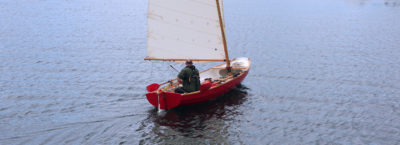
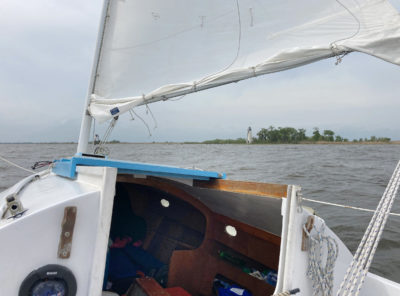
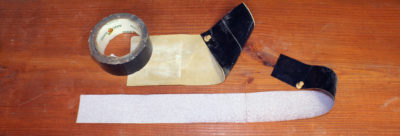
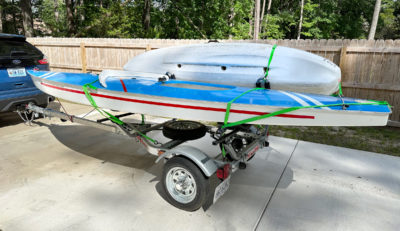
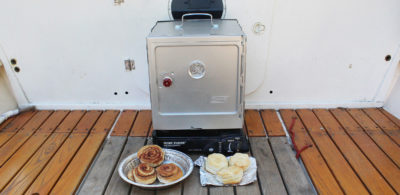

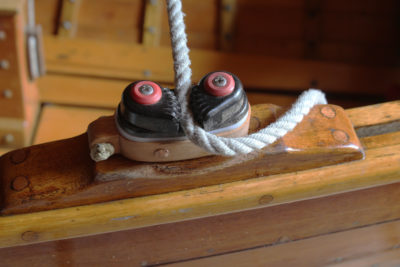
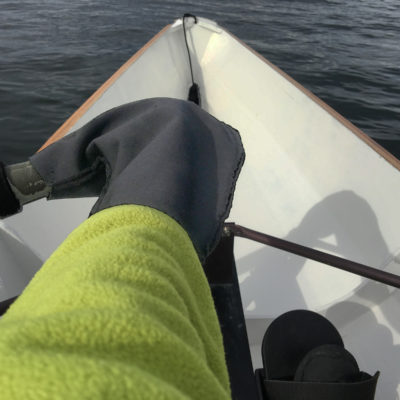
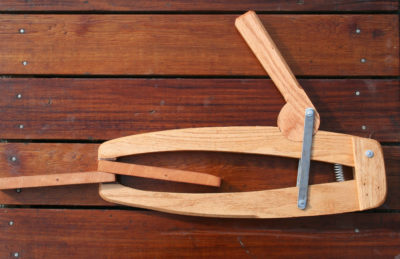

I’ve been building keel patterns for Mars Metal in Burlington Ontario for almost 28 years, I use a 17″ X 21/2″ air file (like they use in auto body shops), if I don’t put at least two layers of duct tape on the sheets first, the air file tears them apart in about 15 minutes. On the larger patterns I’m sanding F 26 fairing compound for hours at a time and can usually get through one side with a single sheet.
Cheers, Ken
Great suggestion. I’ll be making the masts and spars for the boat I’m currently building (Doug Hylan’s Siri) and will certainly use this method for final shaping. I agree that old sanding belts are less than satisfactory.
By the way, just a shout out in support of Mars Metal. I recently received the ballast keel for Siri from them – excellent work, I heartily recommend them if you don’t have the facilities to cast your own.
Andrew
Thanks !
I would never have thought of doing that, what a great idea!!
Good advice. I have already experimented with this sanding system when I build the oars for Venetian rowing which are about 3.5 meters long
Great idea. I’m making my first pair of oars and was wondering how the sandpaper would stand up to the job – I’ve got heaps of duct tape lying around from boats, so I will definitely try this trick!